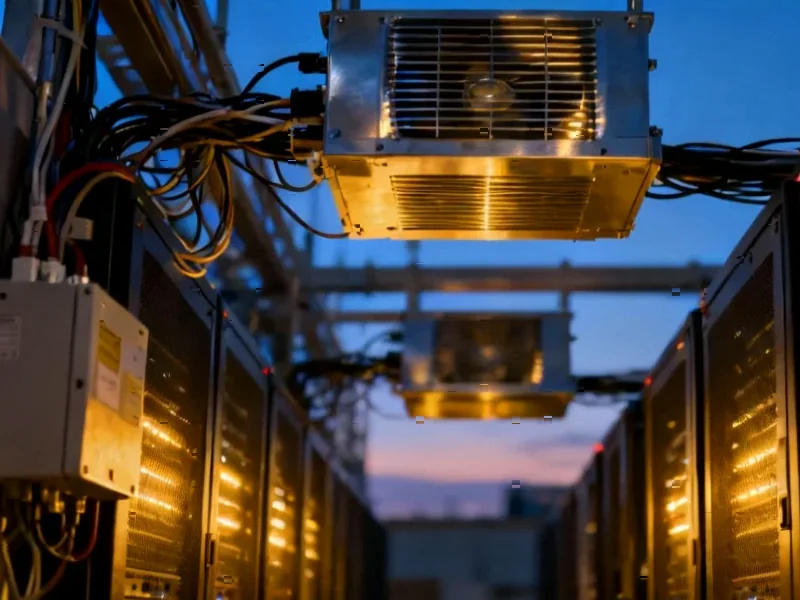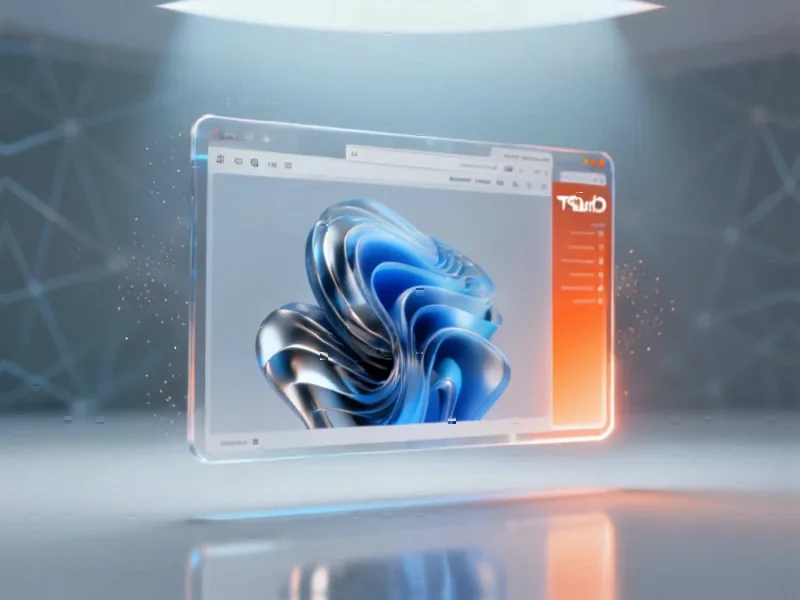According to TheRegister.com, xFusion presented at GITEX Global 2025 in Dubai a comprehensive hardware strategy addressing fundamental physics challenges in modern datacenters. The company’s “Black Technology” suite includes innovations like thermal interface materials doubling thermal conductivity, liquid coolant delivering 10% faster heat transfer, and microchannel cold plates boosting performance by 25%. Their FusionPoD server cabinet achieves a proven pPUE of less than 1.06, significantly below the global average datacenter PUE of 1.56 identified by the Uptime Institute and even Google’s cutting-edge 1.09 average. xFusion also demonstrated real-world success with Algerian oil company ENAGEO, reducing downtime by two-thirds while operating at 55°C in the Sahara desert. This physics-first approach comes as the International Energy Agency found datacenters already account for 1.5% of total world electricity consumption and are projected to be major demand drivers through 2030.
The Physics Reckoning We Can’t Ignore
The AI industry is approaching a fundamental wall that no amount of software optimization can overcome. While much attention focuses on model architectures and algorithmic breakthroughs, the real constraint is thermodynamic: every watt of electricity consumed by GPUs must be dissipated as heat. With NVIDIA’s roadmap pointing toward 1KW racks and next-generation AI factories demanding unprecedented power density, we’re rapidly approaching the physical limits of what conventional cooling can handle. The industry’s assumption that we can simply scale compute indefinitely is colliding with the reality that heat dissipation follows the square-cube law—as components get smaller and denser, removing heat becomes exponentially more difficult.
When the Economics Break Down
The sustainability crisis isn’t just environmental—it’s economic. When average datacenter PUE sits at 1.56, that means for every dollar spent on computation, another 56 cents goes toward cooling and overhead. At AI scale, this becomes economically crippling. The industry’s current trajectory assumes that GPU efficiency improvements will outpace compute demands, but we’re seeing the opposite: each generation of AI models demands more energy per parameter, not less. If xFusion’s claims of pPUE below 1.06 hold up in production environments, it represents not just an engineering achievement but a potential economic lifeline for AI businesses staring at unsustainable operating costs.
Regional Realities and Infrastructure Gaps
The Middle East’s emergence as an AI hub highlights both opportunities and fundamental challenges. While PwC’s research identifies advantages like cheap power and land, the region’s extreme climate creates thermal management problems that would challenge even advanced liquid cooling systems. The ENAGEO case study showing successful operation at 55°C is impressive, but it also reveals how specialized and expensive these solutions become. As xFusion’s expansion into Dubai and Riyadh demonstrates, there’s a global race to solve these infrastructure challenges, but the solutions may not scale cost-effectively to support the AI industry’s projected growth.
The Cooling Arms Race and Its Consequences
Liquid cooling represents a fundamental shift in datacenter design philosophy, but it introduces new dependencies and failure modes. Traditional air-cooled systems benefit from decades of refinement and relative simplicity. Liquid cooling, especially direct-to-chip solutions, creates complex plumbing systems with single points of failure that could take down entire GPU clusters. The industry’s rush toward these solutions—while necessary—creates operational risks that many organizations aren’t prepared to manage. xFusion’s cable-free cabinet design and Three-Bus system attempt to address these concerns, but widespread adoption will require retraining entire operations teams and developing new maintenance protocols.
The Sustainability Paradox
Google’s impressive 1.09 PUE average across their datacenter fleet represents years of optimization, yet xFusion claims to beat even that benchmark. However, we must question whether chasing ever-lower PUE numbers creates a Jevons paradox situation: as cooling becomes more efficient, does it simply enable even more energy-intensive AI workloads? The fundamental problem isn’t just cooling efficiency—it’s total energy consumption. Even with perfect cooling (PUE of 1.0), AI’s exponential growth in compute demands could still push total energy consumption to unsustainable levels. The industry needs to confront not just how to cool AI systems, but whether we should be building some of these systems at all given their environmental impact.
The Multi-Vendor Integration Mirage
xFusion’s commitment to open standards at the interface level is commendable, but history suggests that multi-vendor AI infrastructure rarely works seamlessly. The ENAGEO success story represents a controlled environment with specific workload characteristics. In reality, most enterprises will mix hardware from multiple vendors, creating integration nightmares that can erase the efficiency gains from advanced cooling systems. The industry’s track record with heterogeneous computing environments suggests that the promised “seamless integration” often comes with significant hidden costs in configuration, debugging, and performance optimization.
The Skilled Labor Bottleneck
Even if the technology works perfectly, the human factor remains a critical constraint. Operating liquid-cooled AI infrastructure requires specialized knowledge that most current datacenter teams lack. The transition from air to liquid cooling isn’t just a technology swap—it’s a complete rethinking of operations, maintenance, and disaster recovery. As the industry races to build these advanced AI factories, the shortage of engineers who understand both the computing and thermodynamic aspects could become the ultimate bottleneck. No amount of innovative hardware can compensate for operators who don’t understand how to maintain it.




